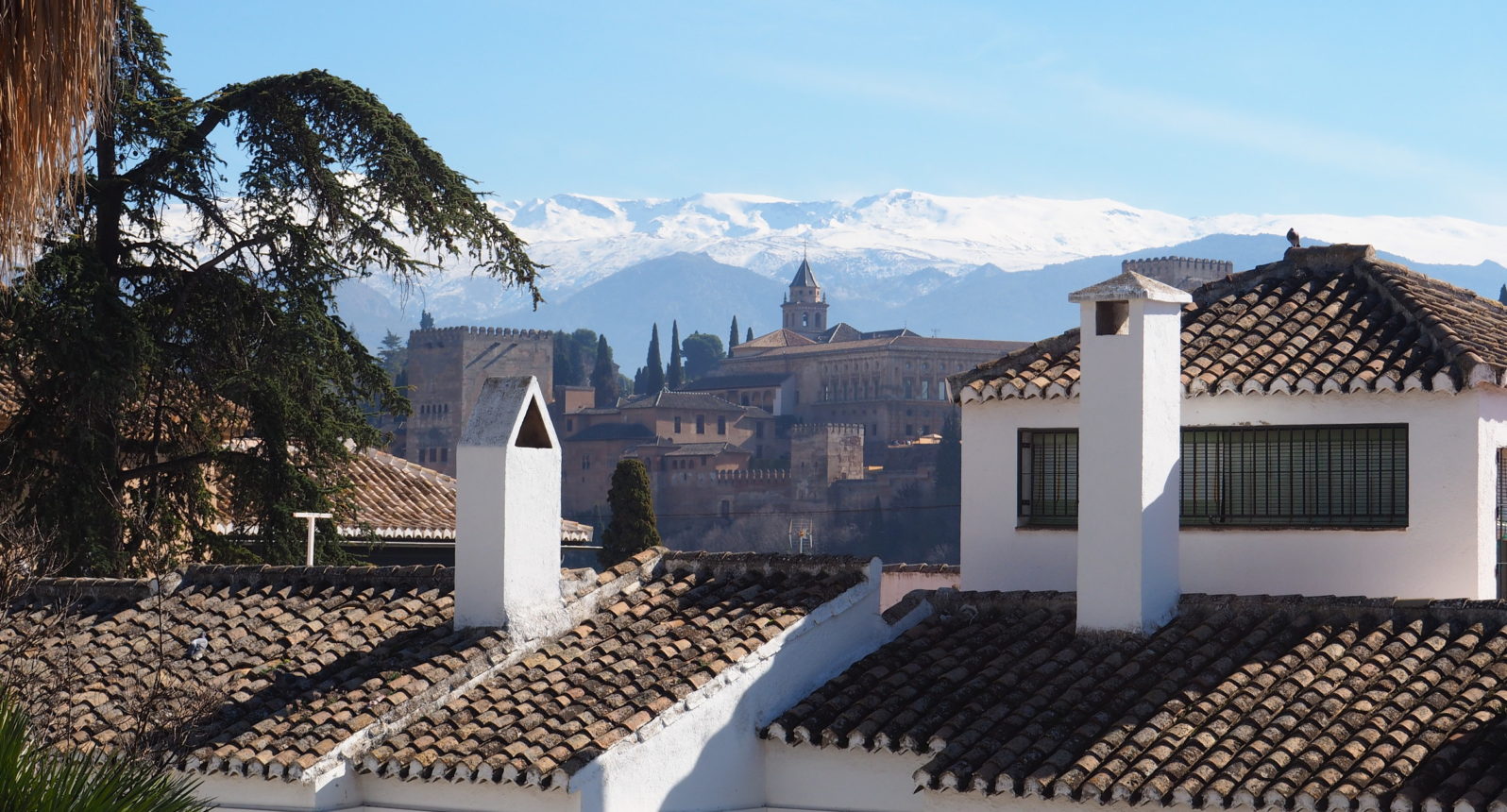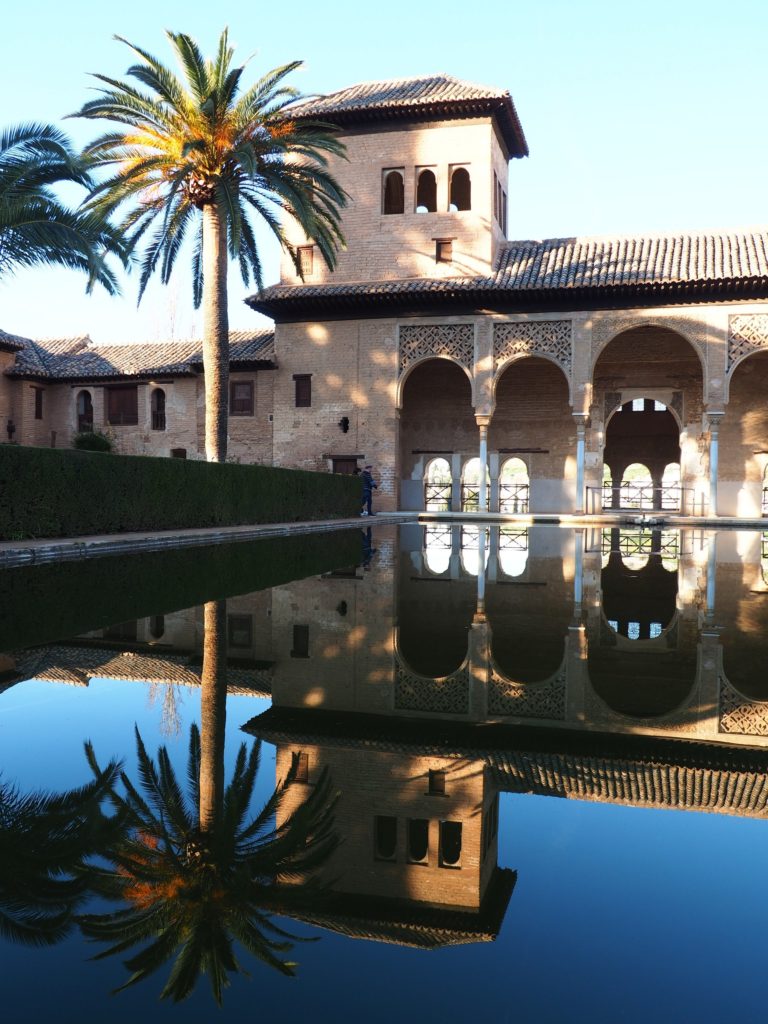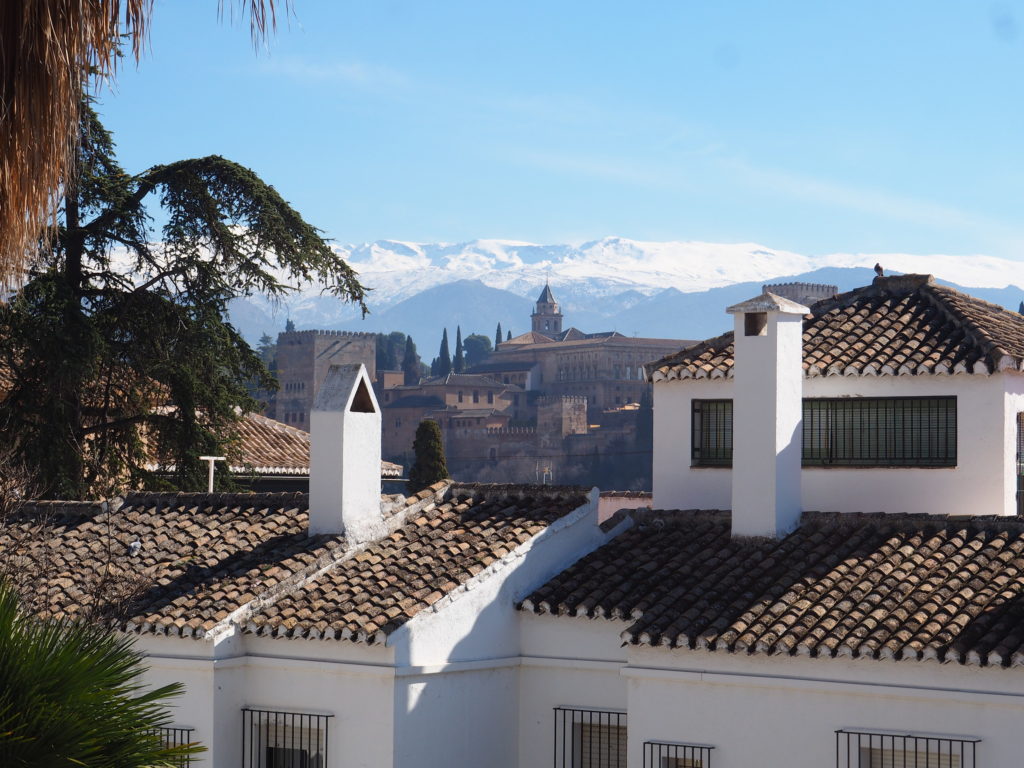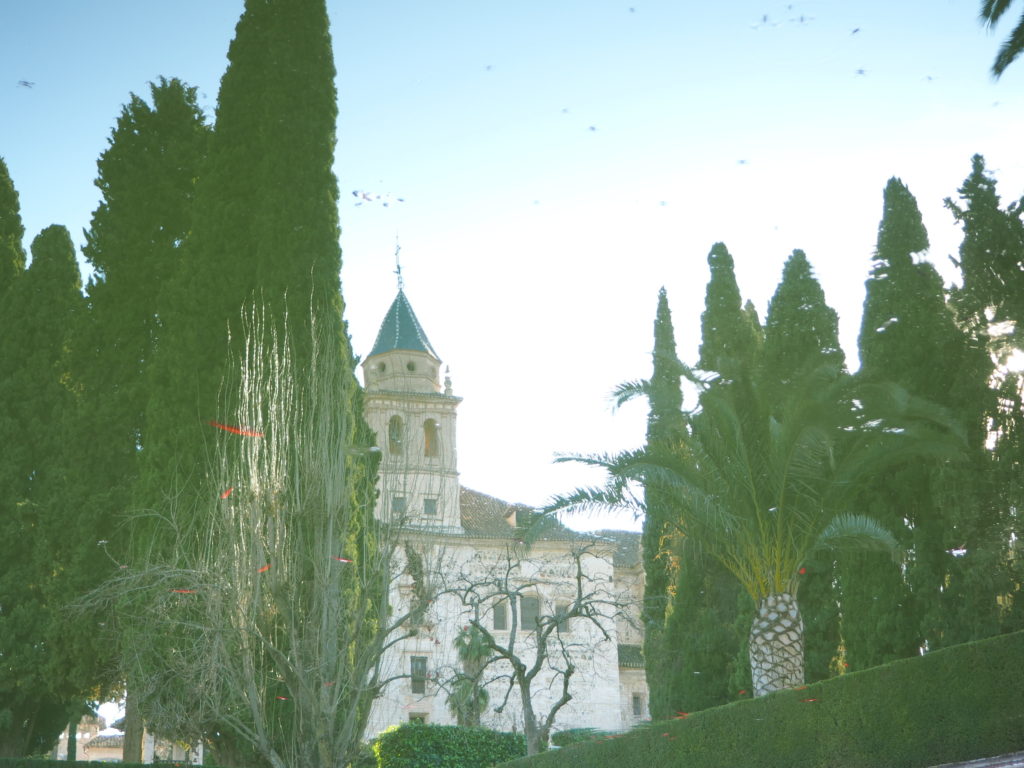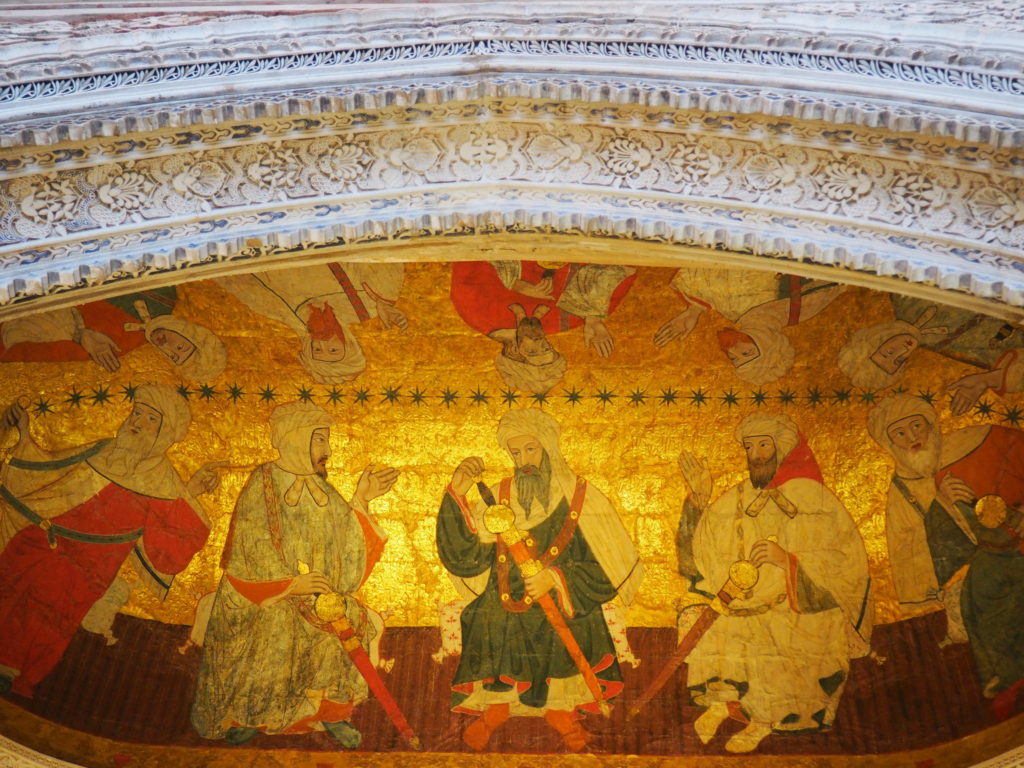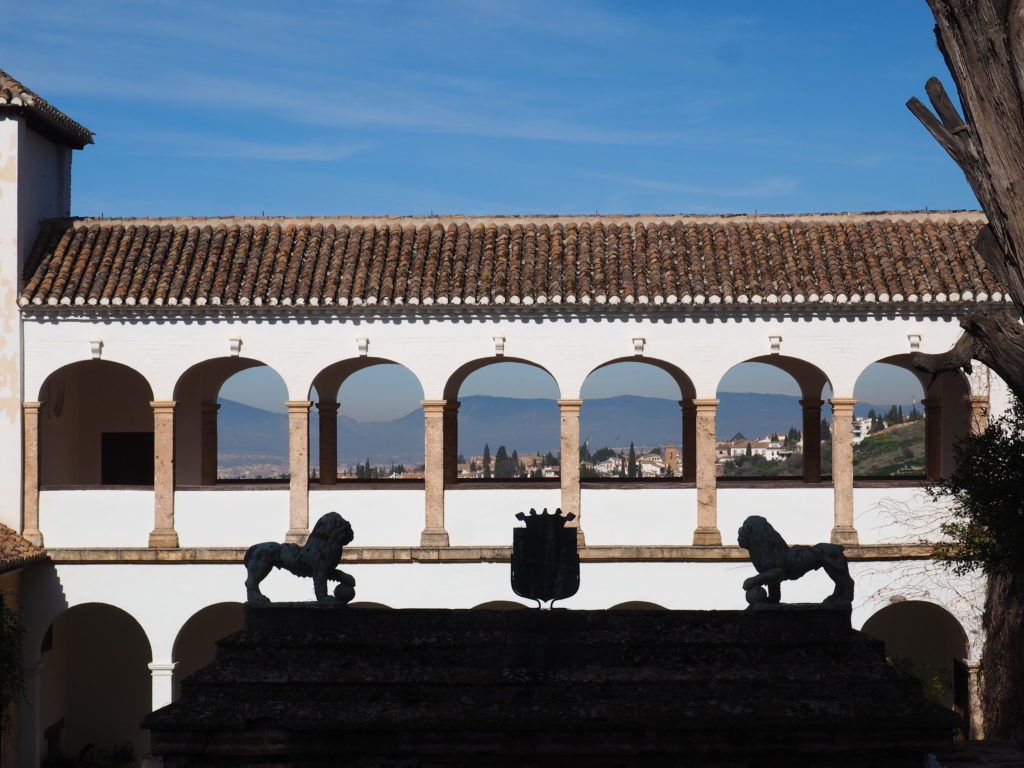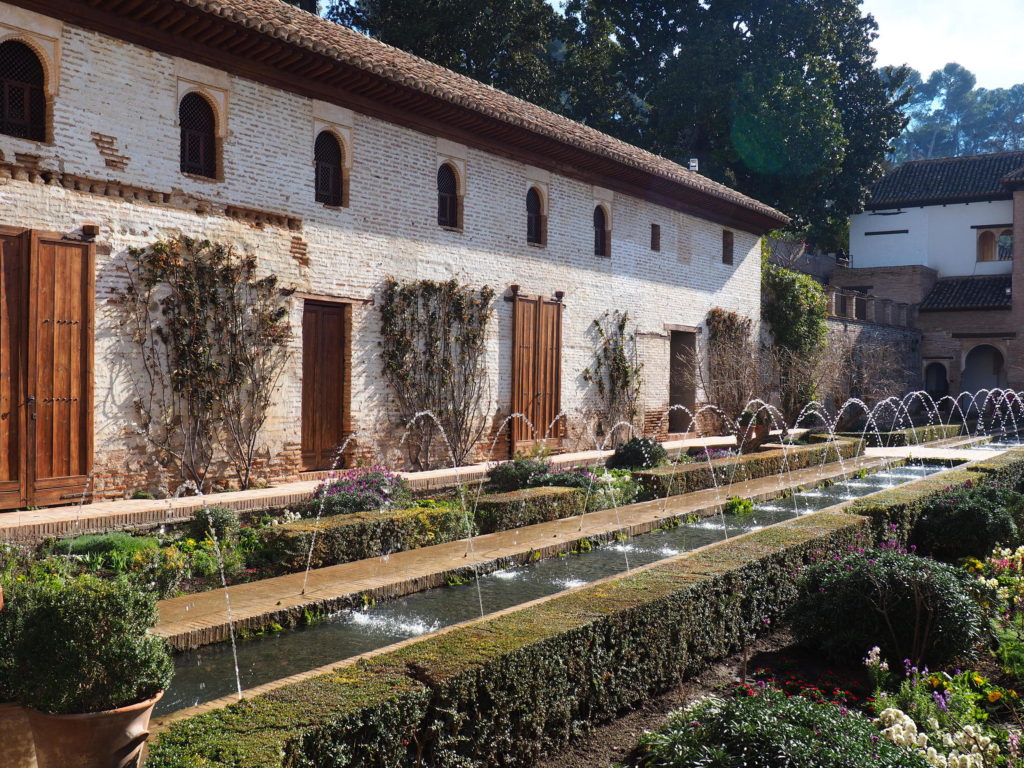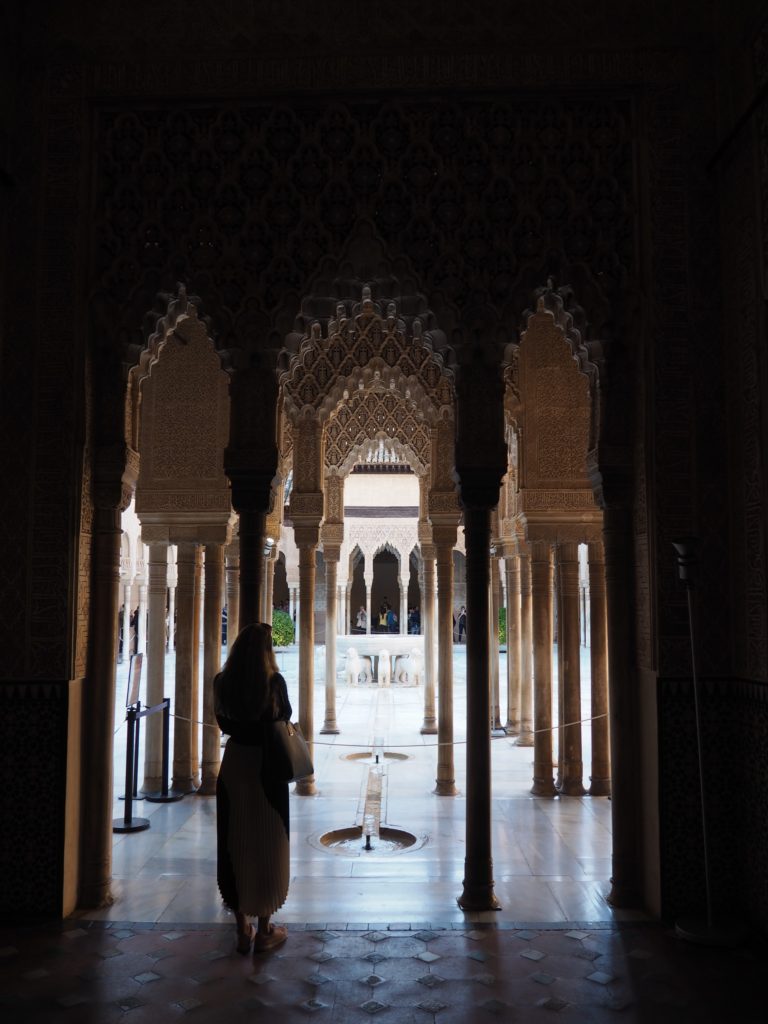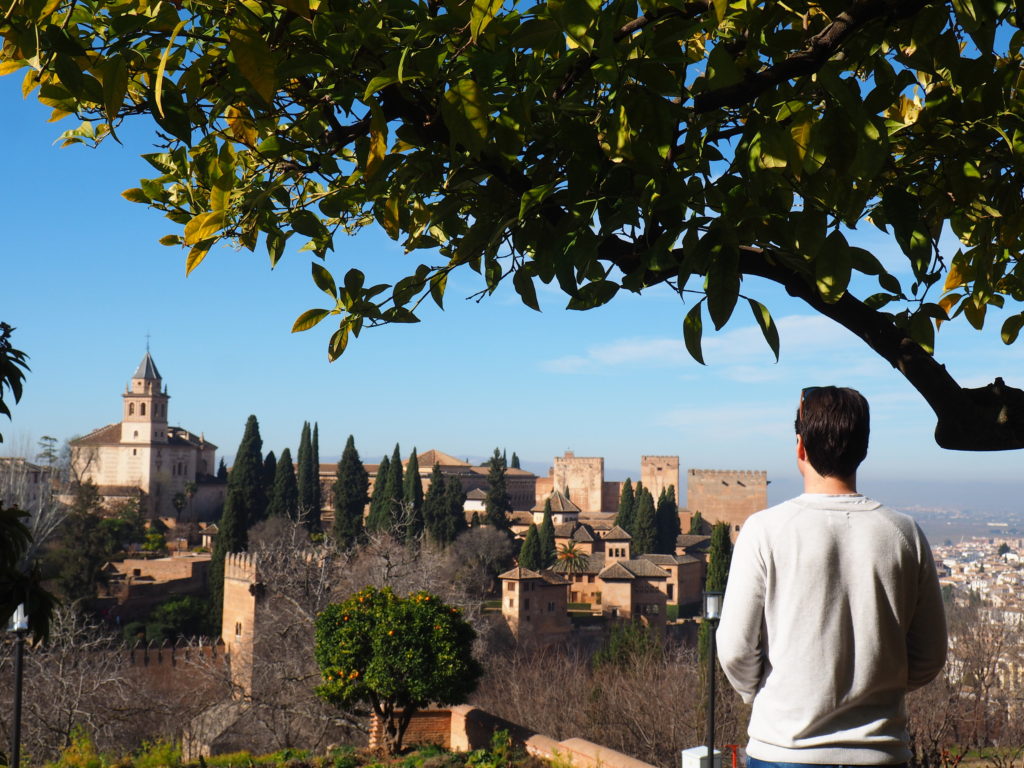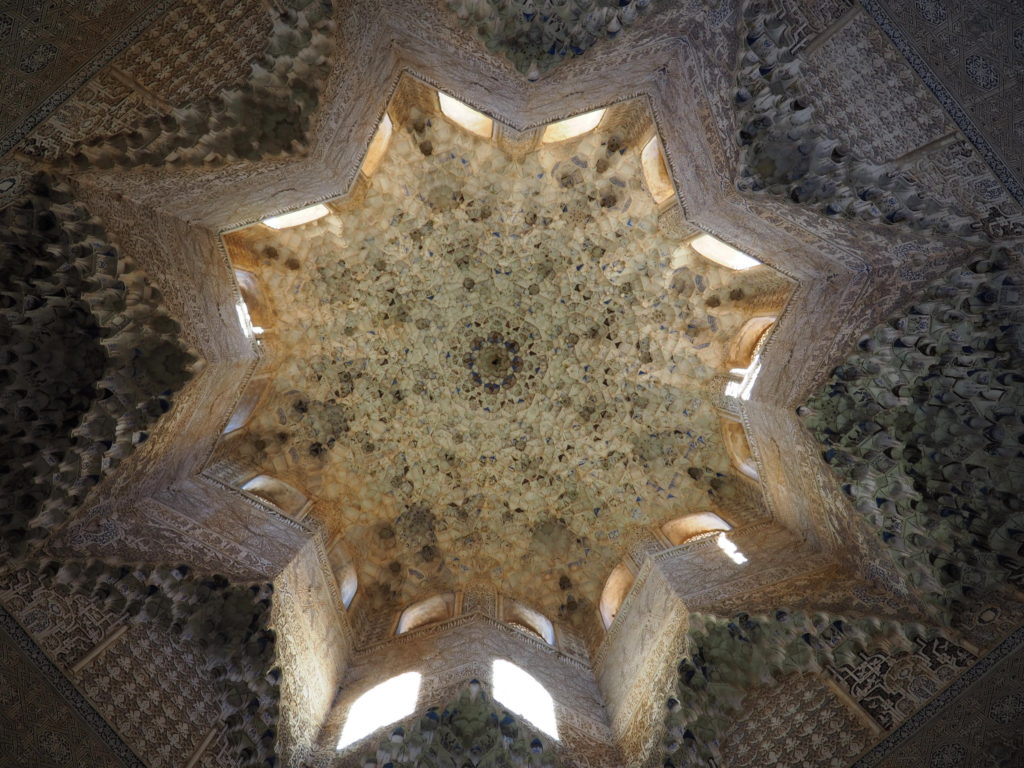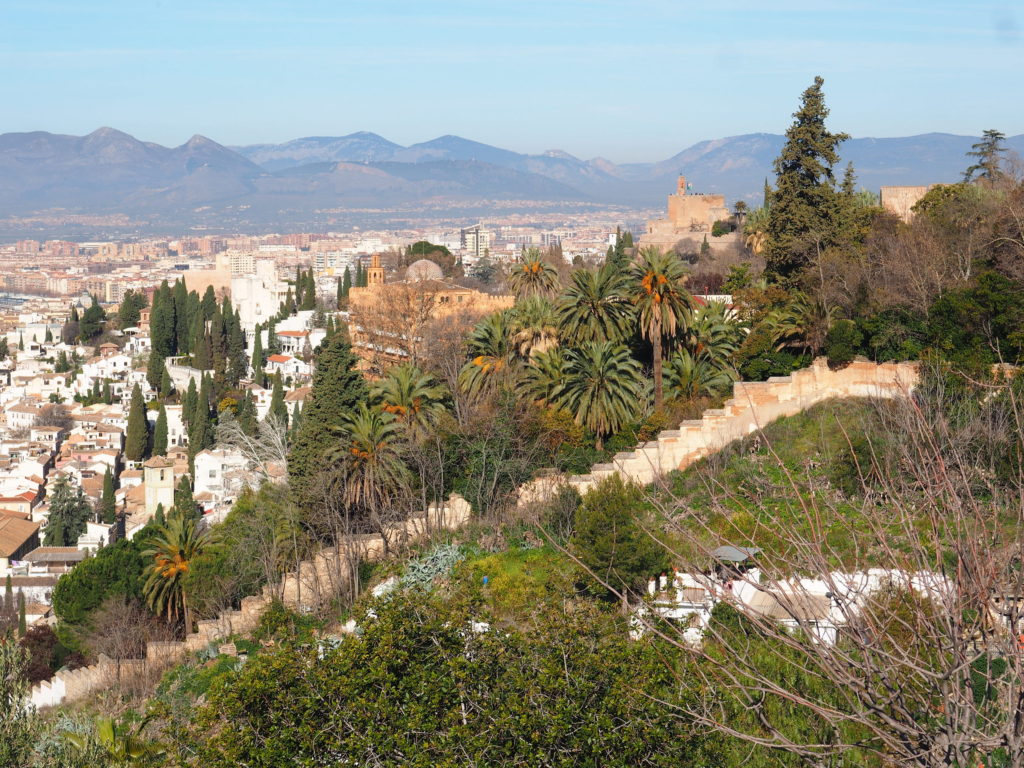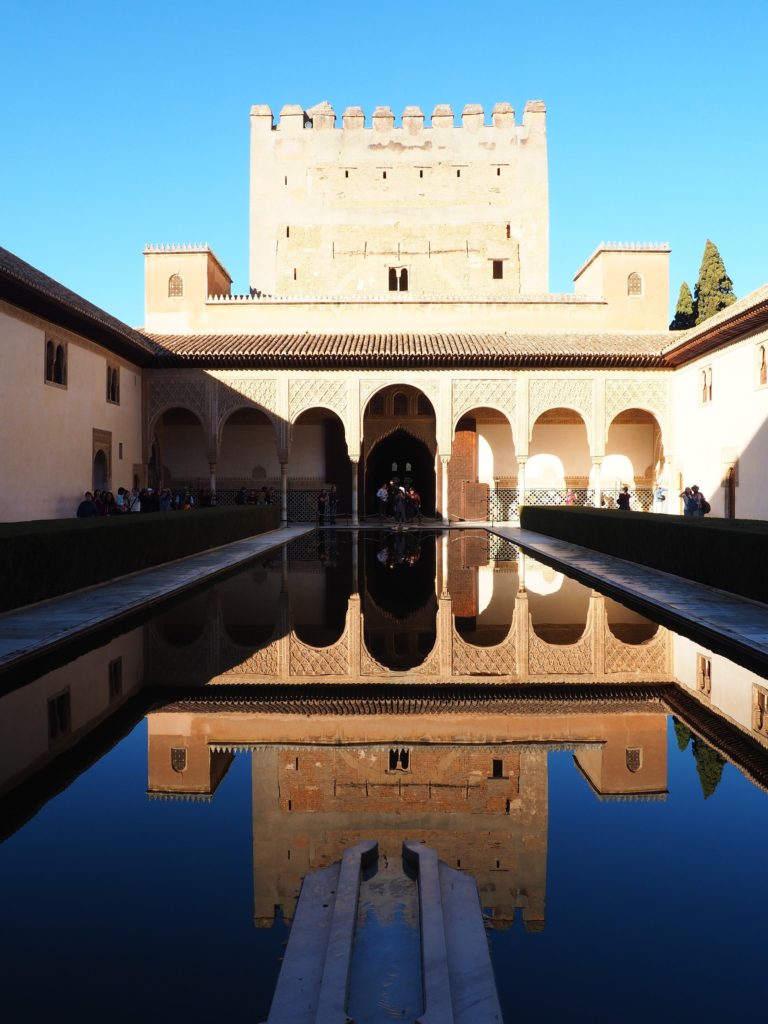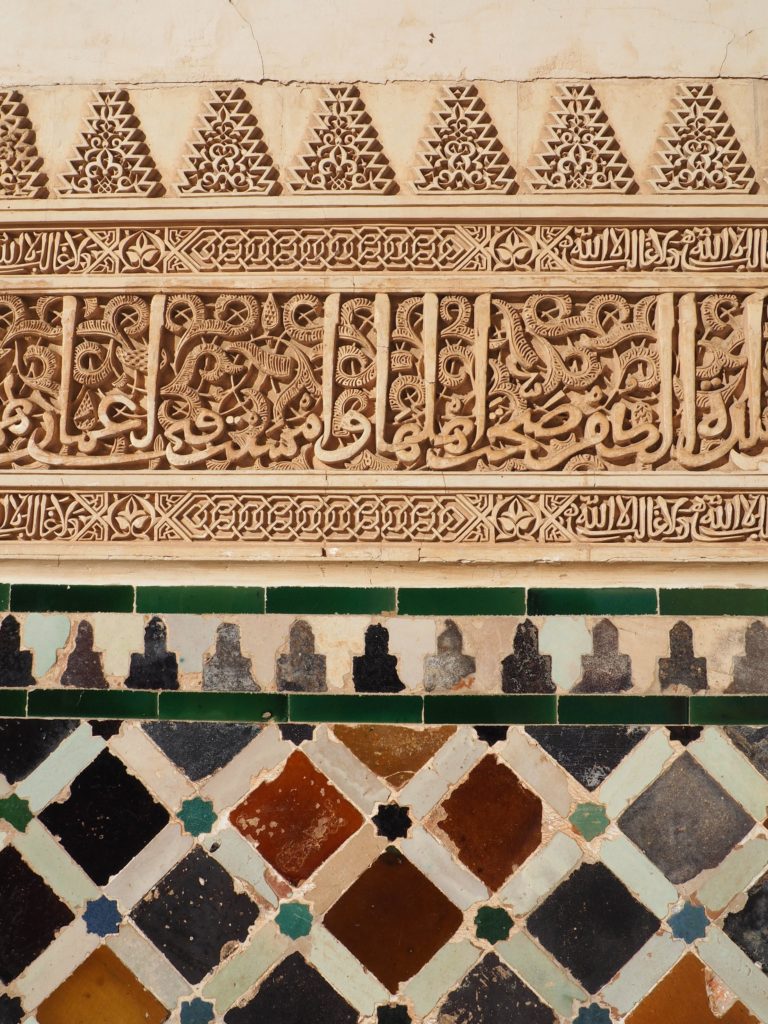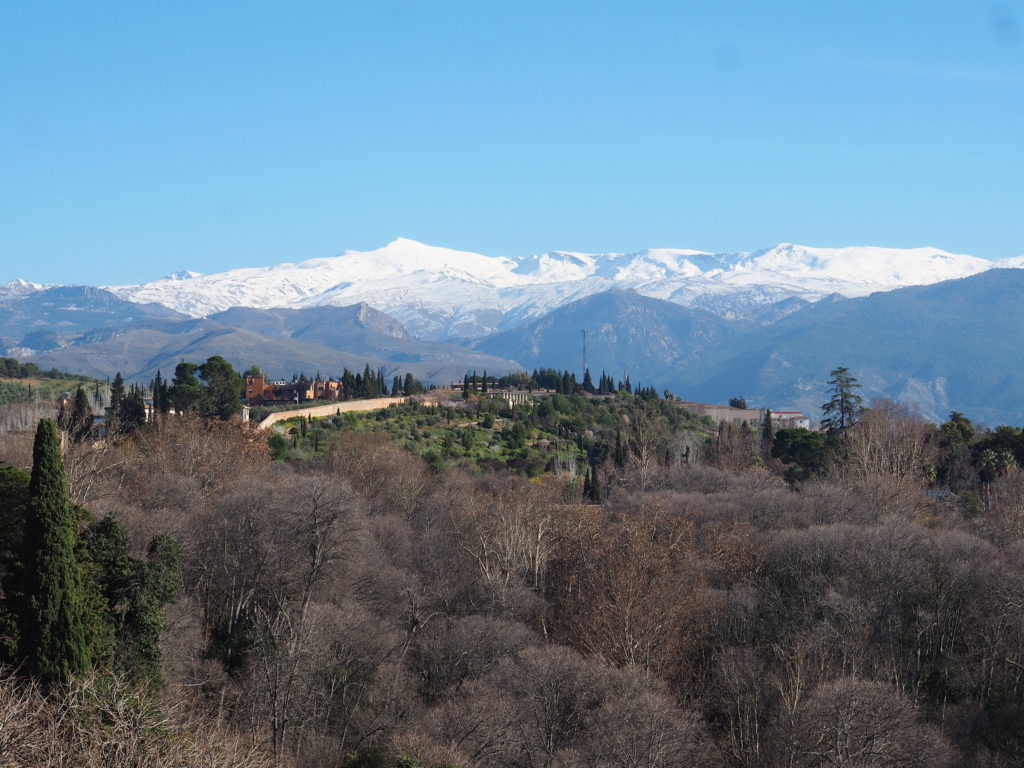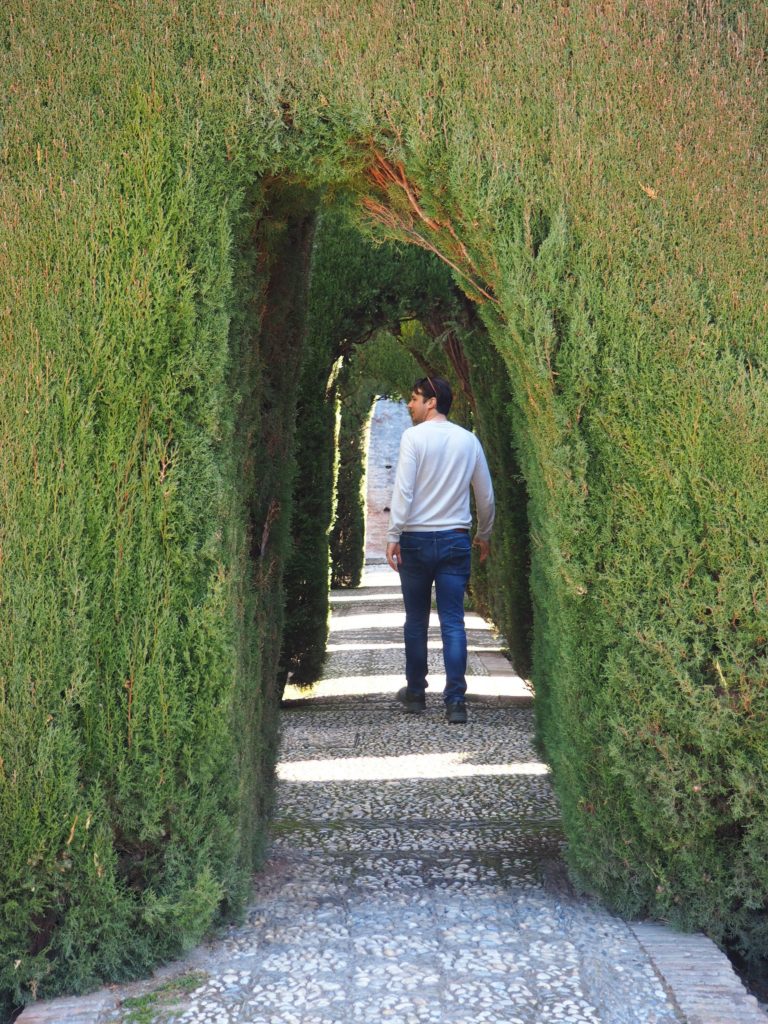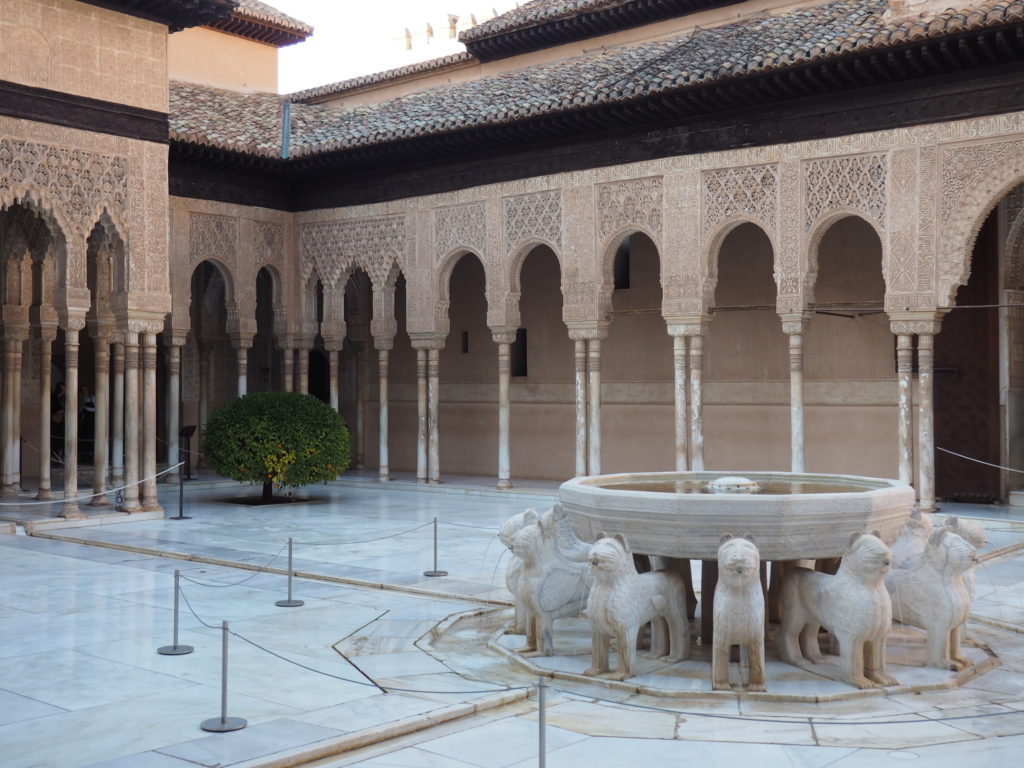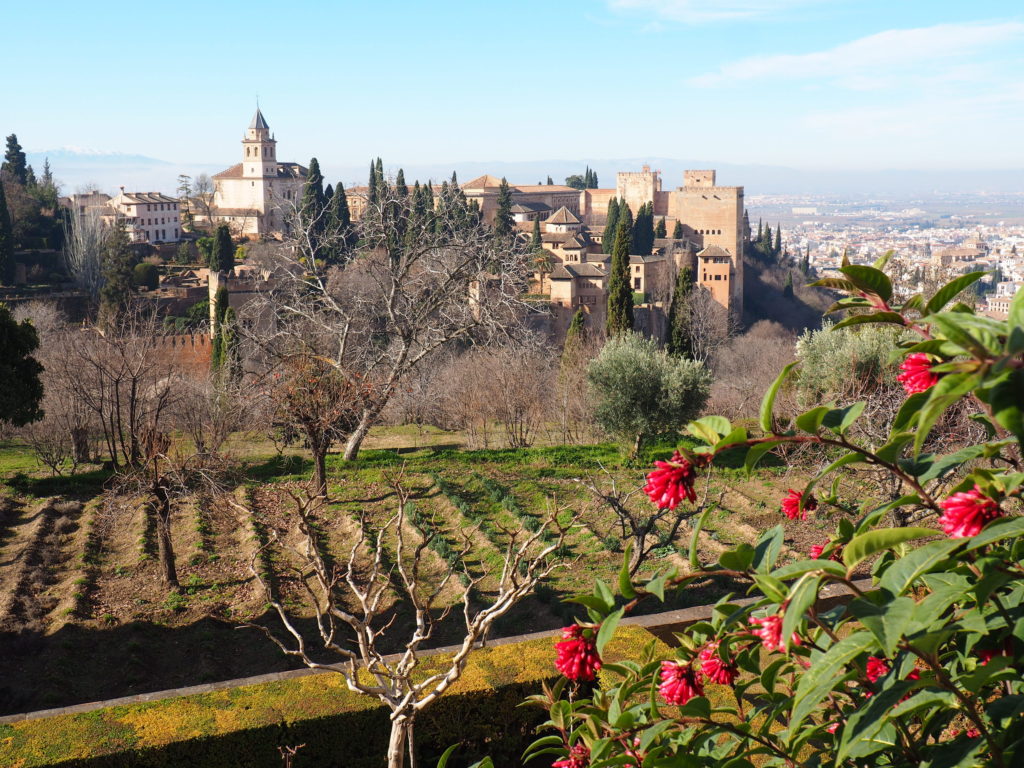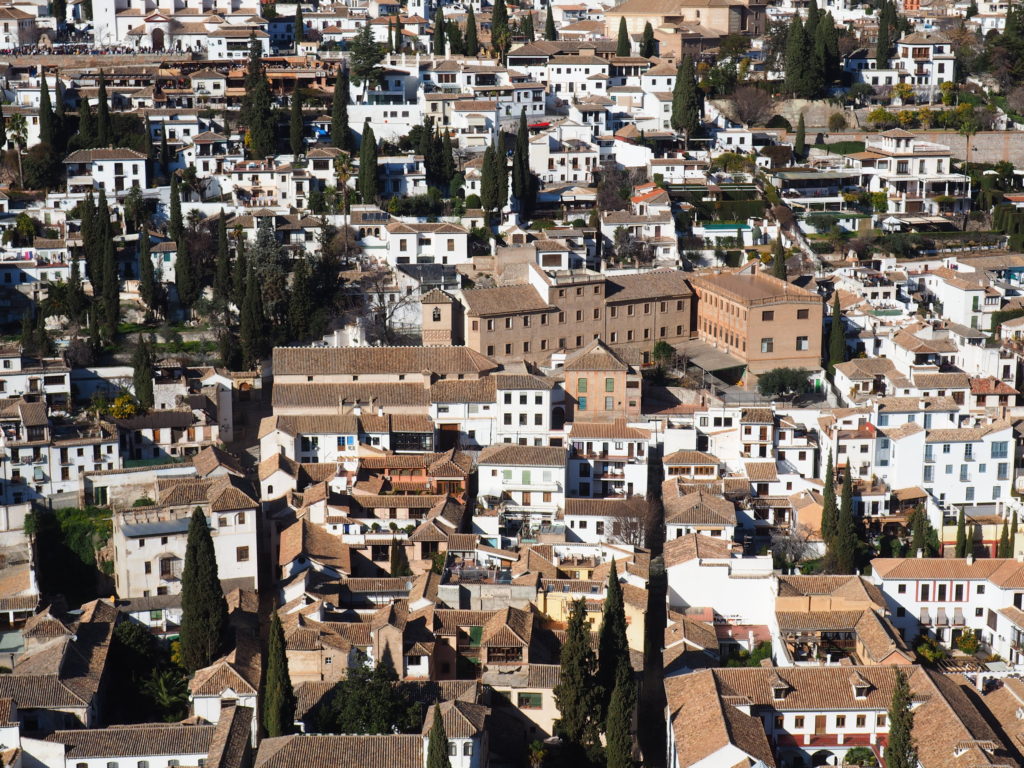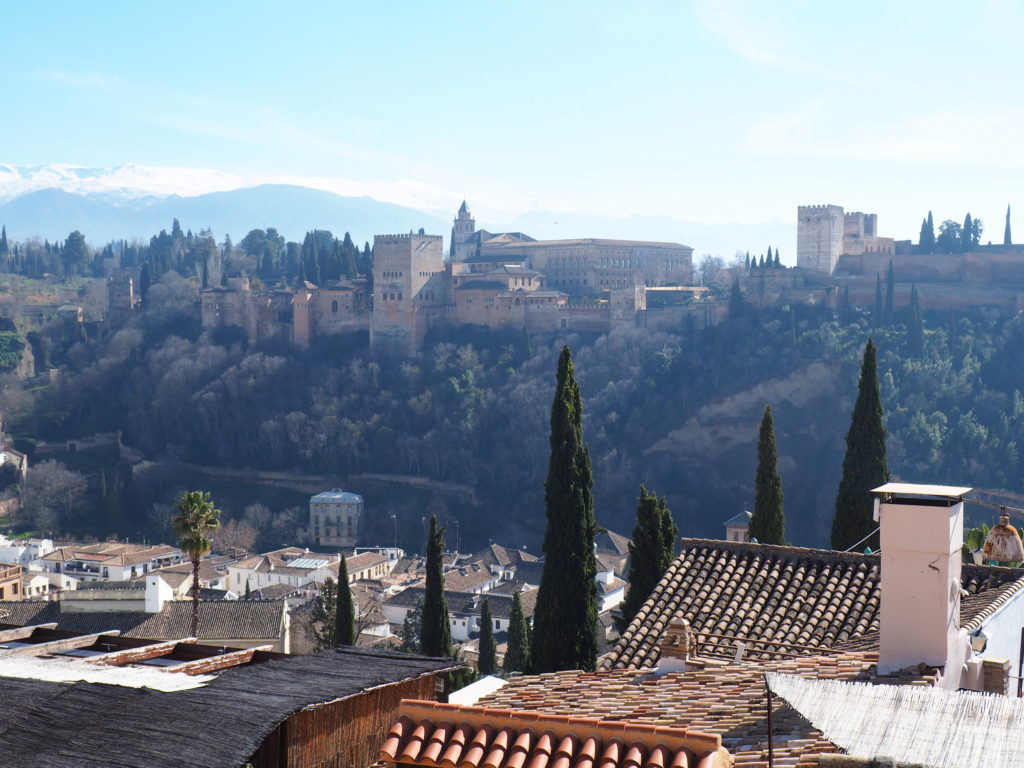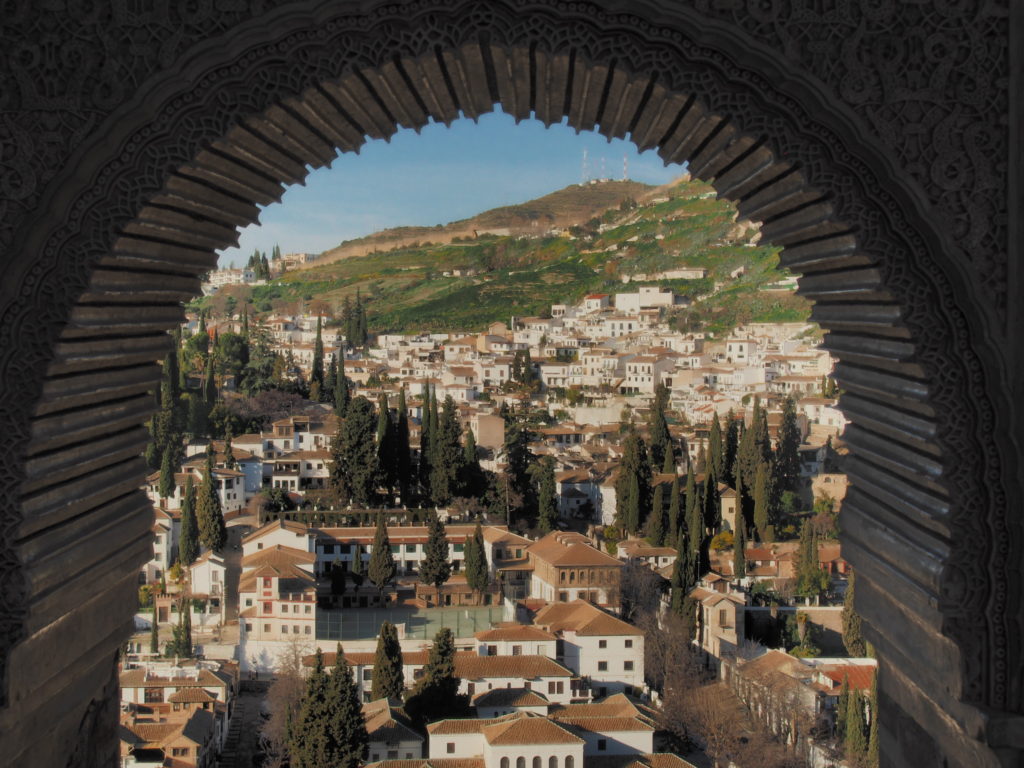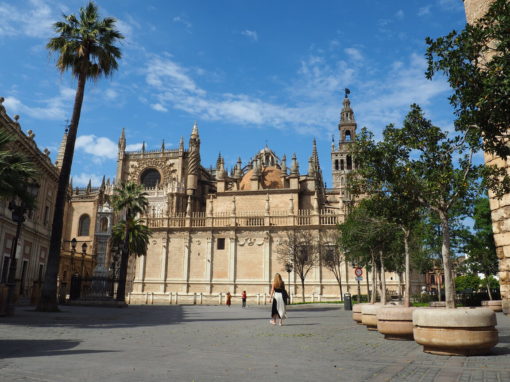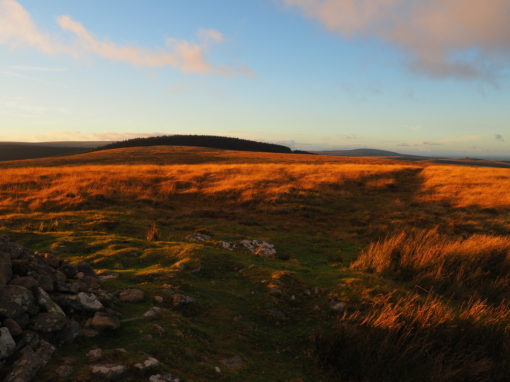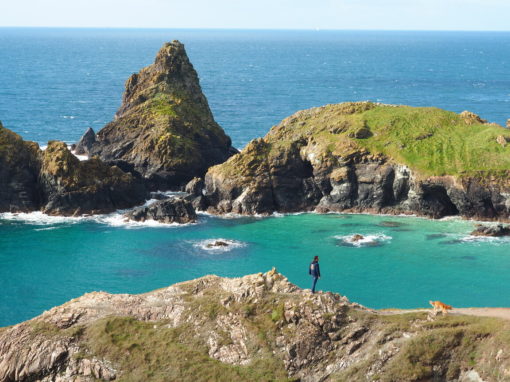If you’re intending to travel all the way to Granada, the iconic Alhambra is most likely the main focus of your journey. And with reason. The unique beauty of the moorish palace is omnipresent, yet without being extravagant.
Combining water and stone: the iconic view on El Portal ↓
View from the other side at Placeta Cristo de las Azuzenas ↓
Most of all, the Alhambra provides us a glimpse of history that we can’t encounter anywhere else in western Europe. At least, not to my knowledge.
Its architecture began with the early moors around the 8th century and extended to the 1490s. Eventually the fortress became known as the residence of the sultan.
Reflections and goldfishes ↓
Carefully carved detail at Palacios Nazaríes, at Sala de los Reyes ↓
Due to the exhibitions in the palace you can get an idea of life as it must have been in a time when the dwellers of the African desert came to the Iberian peninsula, eventually flourished and left this awe-inspiring landmark.
The Alhambra was even the last moorish holdout in Europe, due to its strategic location, before new catholic monarchs, Ferdinand and Isabella, conquered the country. They expelled the moors back to Morocco and ended the moorish influence.
Patio de la Sultana ↓
Fortunately for us visitors some centuries later, the monarchs didn’t destroy a thing. Isabella and Ferdinand where probably astonished by the palace too, as the hours of workmanship that have been put into the building are just hard to imagine.
The exquisite geometric features, arches, filigreed stucco doors, palms gardens, intricate woodwork, pavilion doors and the combination of water and stone make the Alhambra thé number one UNESCO world heritage site in Spain to visit.
Patio de la Sultana ↓
Patio de Los Leones ↓
This place is intended for a calm visit and therefore it is best to take your time and soak up the vibe. You need at least something like four hours to see it all, but it might be best to calculate a little more for the trip, especially if you’re a fan of photography.
View on the Jardines del Paraiso as seen from the Generalife gardens ↓
Torre de Comares ↓
I have visited the building twice, in August 2007 and recently again, in February 2020. Twice I was quite impressed by the area, but unfortunately I also noticed that the building increased in popularity.
It must be said; this is a popular spot.
Mirador del Barranco del Abogado, the viewpoint east in Granada ↓
Patio de los Arrayanes ↓
I couldn’t recall the large amount of visitors in 2007. Perhaps it’s due to the rise of mass tourism, but it might also had to do something with us visiting the building on a Sunday. That said, try to visit the Alhambra during the week and start out early in the day. Doors open at 08:30 and by then you might even experience a bit of solitude.
What a bliss that must be!
Sala de la Barca ↓
View on the Sierra Nevada, the backdrop of the Alhambra ↓
Book a ticket (including passage to all other aspects) well in advance, as ticket to the Nasrid Palaces are limited and you surely don’t want to miss out on those. And last tip; bring your passport as they will check your name!
The garden at Generalife ↓
Patio de Los Leones ↓
As there are several buildings spread out over several hillsides, you should also prepare for a bit of walking. But all in all that’s just part of this journey through time.
View on the Jardines del Paraiso as seen from the Generalife gardens ↓
The maze that is Granada ↓
I hope you can enjoy some quietness in the lush gardens – or otherwise at least these photos I made during my trip in February! The Sierra Nevada makes for a neat backdrop right?
View on the Alhambra as seen from the historical center ↓
Torre de las Damas ↓
And here’s where to find that calm and classy heritage site! ↓
